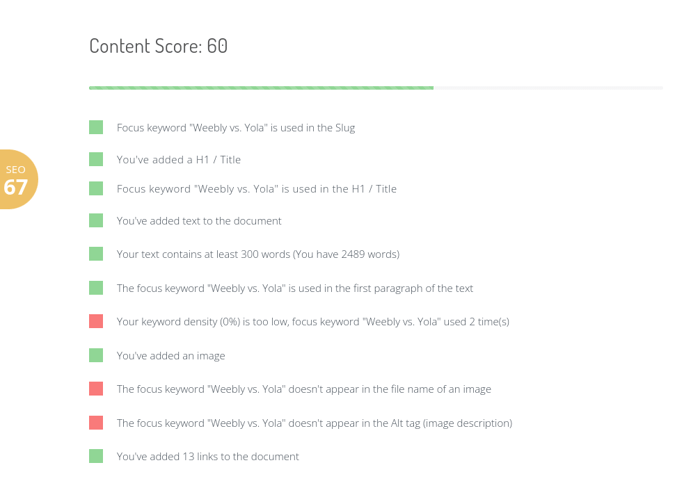Content marketing is a widely used tool to boost sales and revenue. In this content marketing guide for Shopify stores, we’ll show you exactly why it’s become a popular – if not the most popular – marketing method favored by e-commerce store owners.
With content marketing, you can promote your goods and services and improve site SEO, but also build customer relationships and loyalty. It is cheap and effective, but there are more than a few things to consider in order to get it right.
Table of Contents
Tips for Developing Your Content Marketing Strategy
Establish Your Goals and Audience
Before you can do anything, you need to understand that any good strategy comes from good planning beforehand. Have a good think about what your goal is with content marketing. Are you hoping to build customer relationships? Or perhaps the main focus is to promote your products?
It matters because you will likely want to produce different types of content to meet different goals. You might want to produce informational blogs to promote the benefits of your products or list-type posts to grab attention and build a relationship with your customers.
Likewise, the audience you are targeting will determine the language and tone you use, the platforms you post on, and even the timing of your posts.
Do Your Research: Competitors, Topics, and Keywords
In order to beat the competition, you need to know what they’re doing. Look at the structure of their blog and website, what topics they’re blogging about, and which keywords they’re targeting.
Select content topics that are trending and keywords that have a high search volume – and ideally low competition. Of course, keyword research is not always this easy, but it’s even harder to rank highly if you choose keywords with a high competition score.
To know if you’re on the right track with keyword density and in-content SEO, consider using an SEO tool. There are many plugins or extensions you can use, like Yoast, but DropInBlog also has a built-in SEO Analyzer tool. This tool provides you with as-you-type SEO scoring and recommendations to improve your content SEO.

Complete a Resource Assessment
Now that you’ve done your background research and identified your goals and target audience, it’s time to assess your own resources. How much time and money can you put toward the content marketing element of your business?
Be realistic because, next up, you have to schedule your content, and there’s no point in planning to post three times a week if you simply don’t have the time.
Schedule Your Content
Making a schedule of content will help to keep you consistent and hit specific timing goals. For example, publishing an article related to Easter holiday activities and camping products needs to be timed accordingly.
Another important factor is consistency. It helps to show that your site is active for SEO purposes, but regular posts will also engage your customers better.

Review and Improve
Once you’ve developed your content marketing strategy and launched your blog, it doesn’t end there. Monitoring and evaluating is important for any kind of plan. Consider this an evolving plan that you frequently revisit, assess, and adapt where necessary.
Also, if some of your pages aren’t getting as much traffic as they could, look into improving internal linking between content. This will help search engines index these pages and boost their visibility.
Effective Types of Content for a Shopify Store
There are many different types of content that you can produce in order to promote your store. No one type of content is significantly better than another, but some can be better at reaching certain content marketing goals.
Of the written types of content, there are:
- News updates: Sometimes featuring a carousel and generally very short.
- Inspirational posts: These are more long-form and tell an interesting story designed to grab the reader with emotion. This is effective for building relationships with customers.
- Educational tutorials or blog posts: These are common in the tech industry because people want products explained and compared so they can make a purchasing decision.
- Guest blogs: They add a different tone to your blog, and it can be nice to mix it up and invite a niche expert to write about a product or service.
- Q&A or interview posts: Niche interviews with experts or celebrities can be really popular and stoke further interest in your site.
Of course, written content is not the only type of content you can use. Images and infographics are must-haves in order to hold attention and draw a customer in. Videos are also becoming increasingly necessary, as are podcasts – variety is the spice of life, after all.
Best Practices for Publishing High-Quality Content
High-quality content is a rather vague term that can mean a lot of things in different contexts. What we deem the most crucial, however, when referring to “quality content” is meeting the readers’ search intent. Simply put, you have to know your target audience – they should get what they’re looking for.
Whenever you produce content, you should ensure that it is always:
- Useful
- Accurate
- Comprehensive
Are You Giving the Reader What They Want?
This is where keyword and topic research may come back to bite you. If you haven’t done this properly, your content may not meet the goal of the users’ searches. Try to put yourself in the reader’s position and write about what they want to see.
Is It Honest and True?
A big red flag to a reader is inaccurate or out-of-date content. A reader will instantly leave the page if the content is not honest and true. Always research your topics carefully and use trustworthy, reputable sources of information.
It is completely fine – and, in fact, encouraged – to go back over old content and refresh it with correct and up-to-date information. Anything with dates, statistics, or prices needs to be updated to remain relevant with readers.
Is the Content Enjoyable to Read?
Ensuring your content is well structured will make it easier to process and more enjoyable to read. By adding a touch of your own personality and style to your content, you can also make it more interesting and different from the rest.
If your content is really great, make sure you’re taking advantage of word-of-mouth marketing and giving readers a way to share your content. Add social sharing buttons to your pages so readers can easily share your content with friends and family on various social media networks. This extends the reach of your content even further, and you’re developing quality customer leads.
Consistency and Quality Are Important
There is always a push to publish content consistently, and consistent publishing is important. However, if it takes you longer to create quality content, then so be it. Posting less frequently but maintaining a higher standard is better than posting low-quality content more frequently.
Use DropInBlog for Easy Content Management
DropInBlog offers a unique solution for managing blog content. It’s lightweight and fast, and it provides you with all the features you need to boost in-content SEO.
First and foremost, you’ll have access to the SEO Analyzer, but you can also add multiple authors, schedule posts, include social sharing buttons, and embed other types of content.

Unlike WordPress, DropInBlog doesn’t sit on a subdomain. It sits neatly within your Shopify site and won’t slow it down or negatively affect SEO. Best of all, DropInBlog is easily compatible with Shopify. You can find it on the Shopify App Store and try it for free.

FAQs
How can I use social media to promote my Shopify store's content?
It’s considered essential that any e-commerce store today also has a presence on social media. Set up social media accounts for your store and understand who your target audience is for each platform.
When you post content on your blog, you can share this on social media as well. However, be sure to adapt the description for each platform. For example, adding hashtags works well with Instagram but less so for Facebook.
You can also allow your customers to share your content by including social sharing buttons on your pages.
How can I measure the success of my Shopify store's content marketing efforts?
It’s important to understand what works and what doesn’t. To have any hope of streamlining your content marketing efforts, you need to be using analytics tools. This way, you can track your website traffic and see which pages are getting more or less traffic, how long people spend on each page (bounce rate), as well as the time they spend on your site.
If your content is engaging users, then they’ll interact with your site and spend more time on it. You’ll also notice repeat visitors, which indicates relationship building. All of this can turn a reader into a customer.
Why do Shopify stores need content marketing?
Content marketing plays a big part in your store being found by customers. Not only are the SEO benefits obvious, but content marketing can be a very inexpensive method of marketing.
Final Thoughts
Creating a content marketing strategy takes time, but it’s worth it when it meets your goals. All of the background research is time-consuming, but as anyone knows, “failing to plan is planning to fail.”
By doing thorough research, you will better understand your audience and be able to produce the types of content they want. You then need to commit resources to a post schedule because this keeps you consistent and keeps your blog growing.
Of course, none of this planning and scheduling will work if you aren’t routinely reviewing and improving your content marketing strategy. This means you will invest effort where it’s worthwhile, and you ensure that you’re always publishing high-quality content.
We hope this content marketing guide for Shopify stores – or any kind of e-commerce venture – has hit a note with you. Good luck implementing our tips, and happy blogging!





